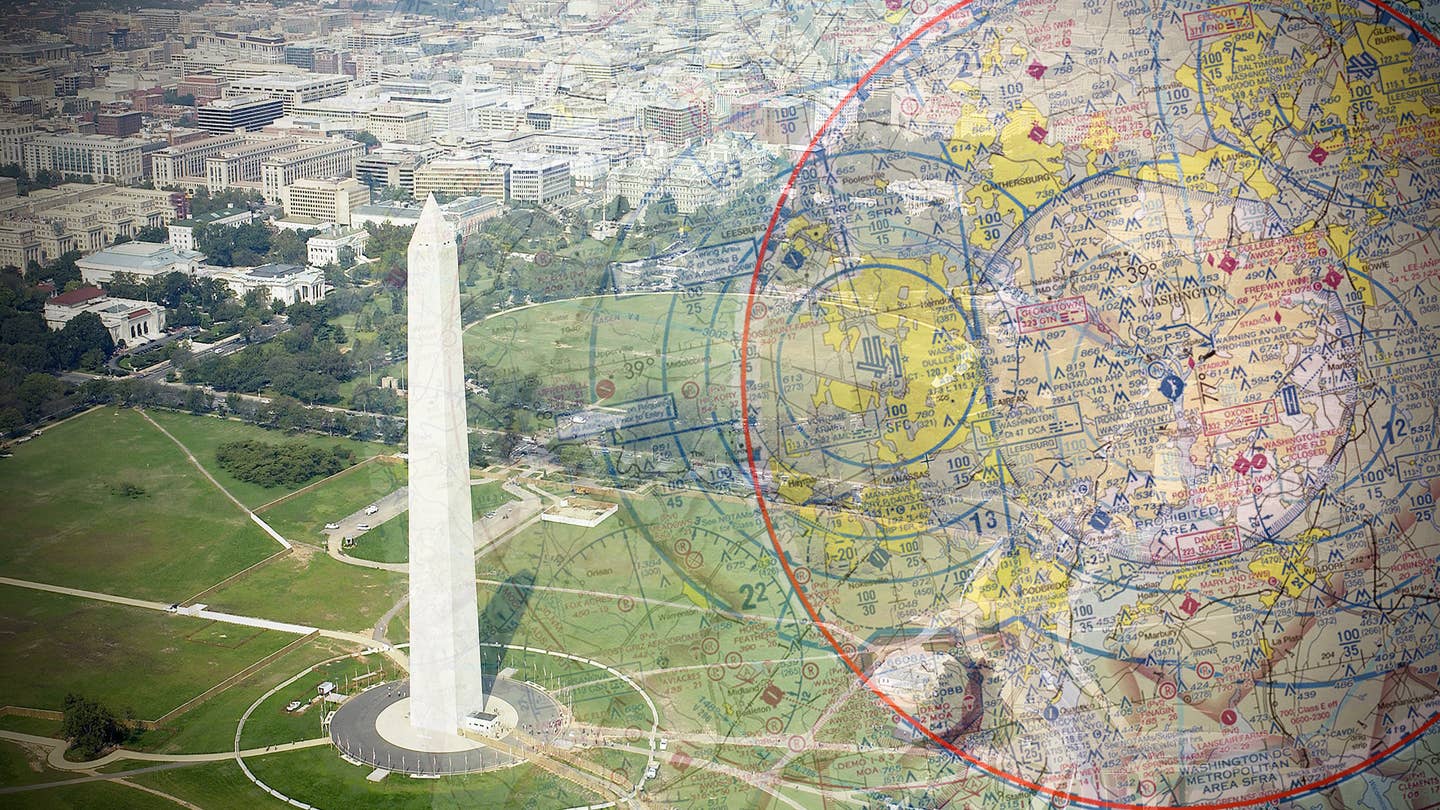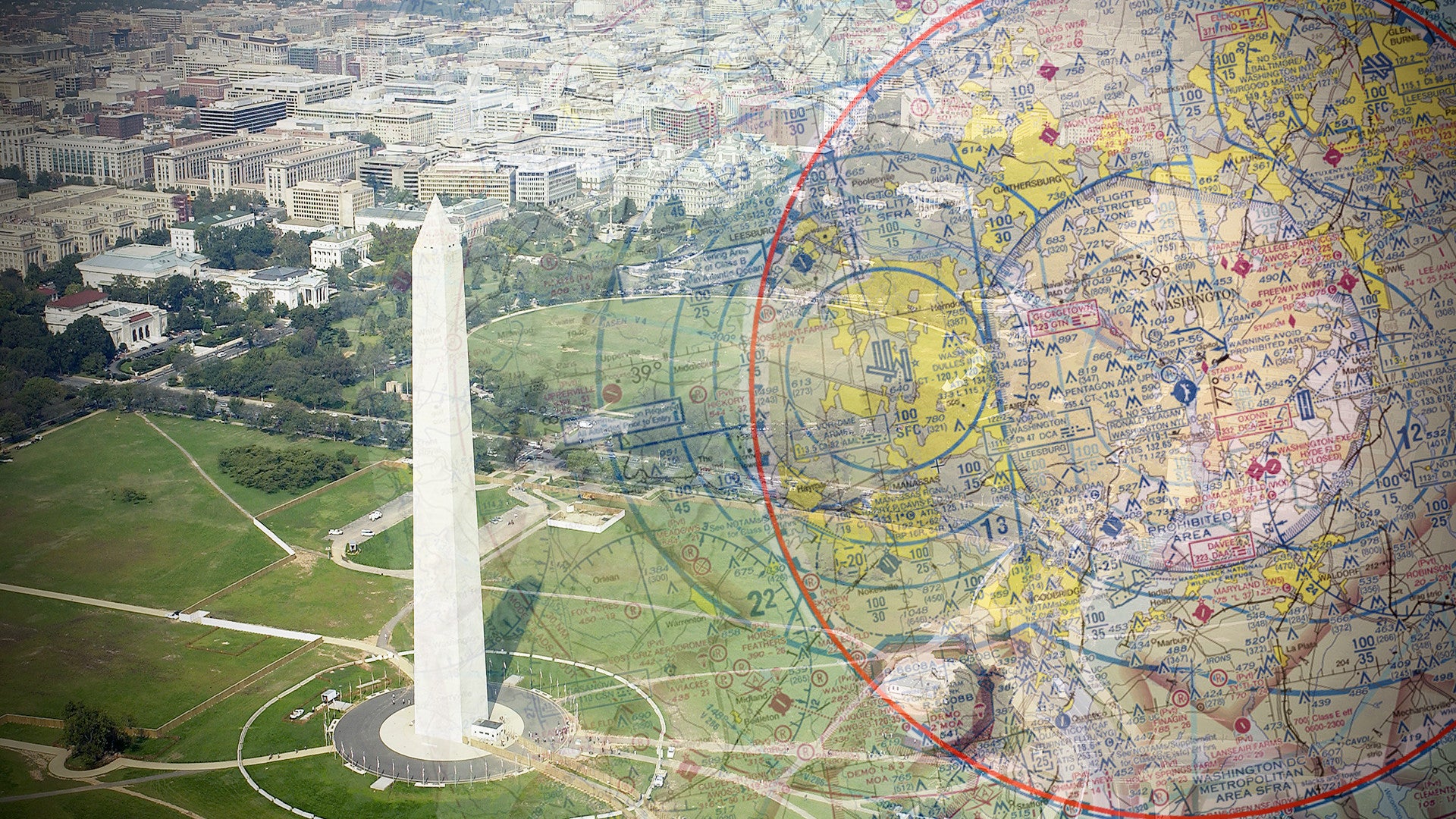Flight data showed multiple stationary objects at different locations high over Washington, D.C., but they may not have been there at all.

Curious flight tracking data available through the popular website ADS-B Exchange for a brief period this evening suggested that there could have numerous unidentified and stationary objects at altitudes between 50,000 and 60,000 feet in the broader area around Washington, D.C. These objects could have been part of some kind of test or the result of an error. Whatever happened was eye-catching in the wake of the string of high-altitude incidents inside U.S. and Canadian airspace last month, many details of which remain murky.
It’s unclear when the readings first appeared, but reports of something unusual began to crop up on social media at around 4:30 PM local time in the nation’s capital. The total number of objects displaying via ADS-B Exchange fluctuated, with as many as 14 individual objects being tracked at times. By 6:00 PM, all of the objects had disappeared from ADS-B Exchange’s feeds.
All of these objects had hexcodes that began with FAA and were apparently broadcasting via the Traffic Information Service-Broadcast (TIS-B) network. TIS-B is used to provide information to aircraft with ADS-B transponders about others that are not ADS-B-equipped. The War Zone has reached out to the Federal Aviation Administration (FAA), as well as the U.S. military’s Northern Command (NORTHCOM) and the U.S.-Canadian North American Aerospace Defense Command (NORAD) to see if they can offer any explanations or further information.
Metadata for all the hex codes in question included the phrase “Unassigned (reserved for future use).” This, plus other details about the structure of the hex codes that observers online noticed, points to the possibility that these could have been generated by FAA for some reason and may not have reflected real aerial objects. TIS-B data does get pushed via control stations on the ground.
At this time, we simply can’t say what exactly may have been going on, or if it is still going on in some way, although the tracks no longer show up on ADSBExchange.com.
ADS-B Exchange database does also show at least one of the hex codes, FAA259, pinging on TIS-B at the location north of Rockville on February 27. FAA259, as well as FAA6F2, appear again near Rockville and Stevensville, respectively, on February 28. In all cases, the data indicates that they were at altitudes of 60,000 feet. This altitude is notably the upper end of controlled airspace over the United States.
Whatever the case, this all comes amid a broader discussion about the ability of the U.S. military and other U.S. government agencies to monitor U.S. airspace and track unknown, but potentially threatening objects. High-altitude and slow-moving ones with small radar signatures are of particular concern. The airspace over Washington, D.C. and surrounding areas is the most heavily monitored and defended in the country.
Three additional still unidentified objects were also shot down over various other locations inside U.S. and Canadian airspace. No wreckage from those incidents was recovered. American authorities now say they believe these objects were likely benign, but have presented no hard evidence that this was the case.
We will update this story as more information becomes available.
UPDATE 10:05 PM EST:
There are additional indications that the curious objects that appeared on ADS-B Exchange in the airspace around Washington, D.C. may not have actually been real and could have been artificial data generated for testing purposes. An official FAA order outlining procedures for inspecting ADS-B services has been brought to our attention.
This document includes a list of “test” hexcodes that are in line with the ones observed earlier tonight. It also specifically notes that “test targets” can be engaged during work like this that are typically set to ping at Flight Level (FL) 600, or 60,000 feet.
In addition, users of Stratux DIY ADS-B receivers have built an interactive online database of known ground stations. Even though that database is not necessarily comprehensive, it does show that the five points where the objects were displayed on ADS-B Exchange earlier tonight almost perfectly align with known ground stations.

